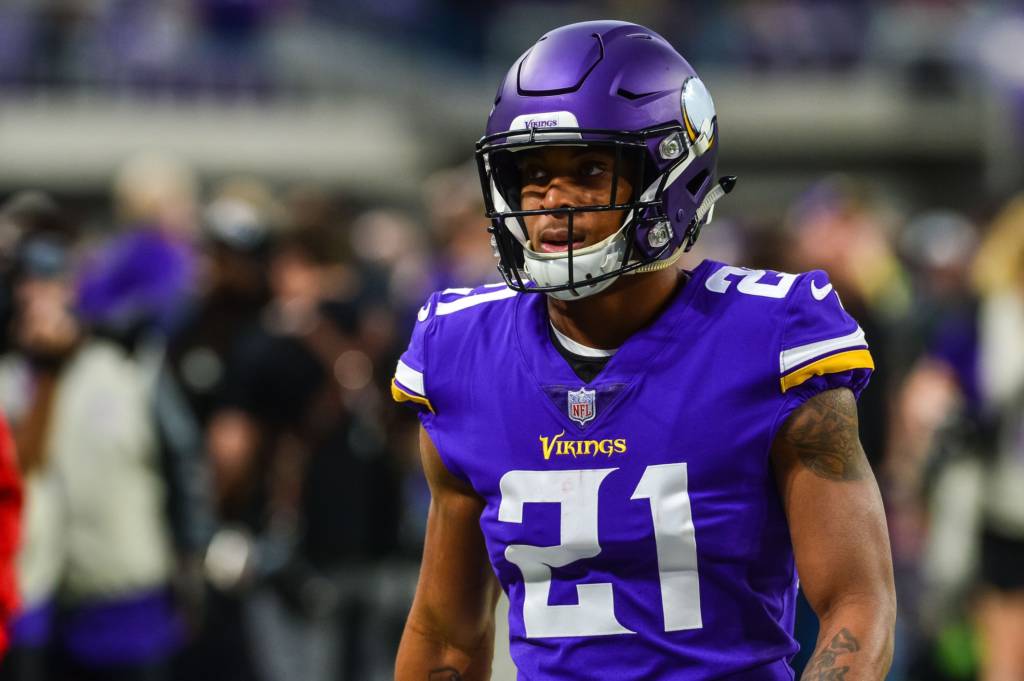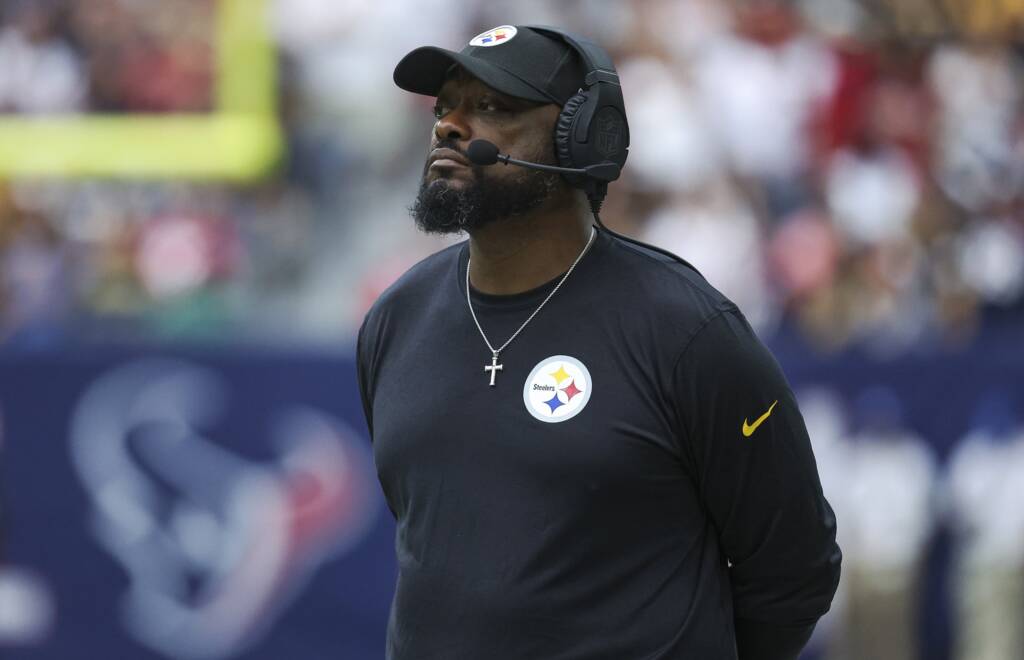The Minnesota Vikings have a reputation as a team that dominates the draft. As Rick Spielman has wheeled and dealed to acquire draft picks as if they were infinity stones, the Vikings have been able to pluck talent out of the later rounds and build a team that was a Super Bowl contender for the latter part of the 2010s.
But their draft classes haven’t had the same success in recent seasons.
Hindsight is 20/20, but like many teams, the Vikings have their share of misses in the draft. For a team that finished last year at 7-9 and may be stuck as a 7-to-10 win team for the foreseeable future, there are several draft picks that the Vikings would like to have back and learn from heading into this year’s draft.
2016: Mackensie Alexander (54th overall) over Joe Thuney (78th overall)
Everyone will remember the Vikings took Laquon Treadwell (23rd overall) over Michael Thomas (47th overall), but that’s too easy. Instead, the Vikings could have solved one of their biggest issues of the past decade by selecting Thuney over Alexander.
The interior of the Vikings’ offensive line has been a weakness ever since Steve Hutchinson retired in 2011. They have shuttled guards in and out over the past nine seasons, but they’ve never made a considerable investment in the position. A second-round pick may be too early to take a guard, but it would have provided more value than selecting Alexander, who was buried behind several veteran corners.
While the Vikings would eventually need Alexander’s services, he didn’t fully buy into playing slot corner until 2018. By then, the Vikings were in desperate need of a guard.
The Vikings got off to a 5-0 start in 2016, but things went south in a hurry because they couldn’t stop interior pressure. With Sam Bradford rooted into the pocket, things got ugly and they limped into an 8-8 record.
As a converted offensive tackle, Thuney may not have been able to make an immediate impact to save the 2016 season. However, he could have stopped a revolving door that has included several late-round projects, including 2016 fourth-rounder Willie Beavers, 2017 fifth-round selection Danny Isidora, 2018 sixth-rounder Colby Gossett, and 2019 fourth-round pick Dru Samia.
While the jury is out on 2020 seventh-round pick Kyle Hinton, the story remains the same with the Vikings and the guard position — the late-round projects are not working for a team that has win-now aspirations. If they find a prospect worth drafting high enough, they should go get him in the same way they selected Brian O’Neill and Ezra Cleveland in the second round of recent drafts. This strategy could provide more prospects that provide an instant impact rather than waiting for a late-round project to develop.
2018: Mike Hughes (30th overall) over Lamar Jackson (32nd overall)
With the Vikings on the clock in the first round of the 2018 draft, they opted to draft another cornerback that seemed like a luxury pick. Perhaps they saw the upcoming departure of Xavier Rhodes and Trae Waynes in 2019, but by taking Hughes they missed out on a potential franchise-changing quarterback.
Of course, this pick came just over a month after Kirk Cousins signed a fully-guaranteed, three-year deal, but they passed on a potential franchise quarterback in favor of a player that could help them win now.
Over the past couple of years, teams have drafted quarterbacks even when they don’t need one. The Seattle Seahawks drafted Russell Wilson in the third round after signing Matt Flynn in free agency. The Ravens drafted Jackson when they had Joe Flacco. The Kansas City Chiefs traded up for Patrick Mahomes when they had Alex Smith. Even the Green Bay Packers, who have been mocked for this selection, took Jordan Love when they had Aaron Rodgers.
Although Rodgers responded with an MVP-winning season, the case remains the same. Teams should be on the lookout for an opportunity to draft a player they think can be a long-term solution at the position. Not only does drafting a franchise quarterback have obvious on-field benefits, but it also puts teams in an advantageous position when dealing with the salary cap.
With the Vikings pressed up against the cap, having a cheaper quarterback could have helped the team address some of their shortcomings. This would have led to a wider championship window and cemented them as long-term contenders.
2019: Garrett Bradbury (18th overall) over Elgton Jenkins (44th overall), Erik McCoy (48th overall)
When the Vikings made Bradbury their first-round pick in 2019, fans celebrated their new savior of the offensive line. As a rock-solid, plug-and-play prospect, Bradbury had the athleticism to play in Gary Kubiak’s zone scheme and lock down the center position for the next decade.
The only problem was that they didn’t get the upside they should have gotten with the pick.
While Bradbury hasn’t been a bust for the Vikings, he hasn’t been what they expected. Despite his efforts, he can’t add the strength needed to go against bigger, stronger defensive tackles on the inside like Kenny Clark and Akiem Hicks. However, Bradbury has been much better in the running game, which fits Minnesota’s offensive scheme.
The issue here is that the Vikings went for the safe prospect instead of trusting their instincts on other players. Both Jenkins and McCoy have developed into two of the top interior linemen in the league, which is a key reason why Pro Football Focus’s Mike Renner deemed this pick the Vikings’ worst draft mistake in the past five years.
Bradbury, 26, will likely never be the All-Pro the Vikings had envisioned. But with the current state of their offensive line, there’s also a chance he’ll spend the entirety of his career in Minnesota — clogging the position and leaving the Vikings with no chance to upgrade.
2019: Irv Smith Jr. (50th overall) over A.J. Brown (51st overall), D.K. Metcalf (64th overall), Terry McLaurin (76th overall)
While the offensive line was a top priority in the 2019 draft, the Vikings also needed to find a third option in the passing game. As teams doubled Stefon Diggs and Adam Thielen, the Vikings realized they needed a WR3 to make teams pay when they keyed in on their top targets.
They took Smith, who was tabbed as the successor to Kyle Rudolph. With Rudolph entering the last year of his deal, Smith could learn under one of the greatest tight ends in team history before fully taking over in 2020.
This sounded great in theory, but they ended up passing on three dynamic receivers. Brown and Metcalf went right after Smith, and McLaurin wasn’t far behind in the third round. Even Darrius Slayton, who lasted until the fifth round, would have been a solid pick over Dillon Mitchell and Bisi Johnson, who the Vikings took in the seventh.
To cap this all off, the Vikings signed Rudolph to an extension later this offseason before dramatically cutting the usage rate of tight ends in their offense. The Vikings now need to get off Rudolph’s contract, and drafting Metcalf or Brown would have done more for Diggs and Thielen.
2020: Jeff Gladney (31st overall) and $11.4 million for Anthony Harris over Antoine Winfield Jr. (45th overall)
The early returns on the Vikings’ 2020 draft class look great, but it could have been even better if they had drafted Winfield.
Winfield didn’t have a spectacular season for the Tampa Bay Buccaneers during their Super Bowl run, but he played at a similar level to Harris. As Pro Football Focus’ 33rd-rated safety, he wasn’t far off from Harris, and Winfield made $10 million less than Harris last season.
With that money off the books, the Vikings could have made another move in free agency such as signing a guard or a veteran corner to occupy the spot that Gladney did.
Gladney’s rookie season didn’t go as expected. He started for most of the season, but was outperformed by Cameron Dantzler, who was selected in the third round. When Gladney cracked the starting lineup, he allowed seven touchdowns (second-most in the NFL) and a 124.7 passer rating when targeted (18th among qualifiers).
A player who struggles in his rookie year doesn’t always end up being a bust in the NFL. However, the Vikings could have gotten a corner in free agency and selected the better player rather than drafting for need.

